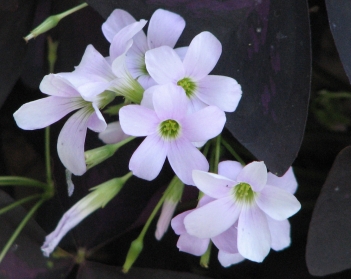China-berry; China-Berry/ Neem/Umbrella Tree Melia azedarch L;. It is illegal to intentionally plant this invasive, soft, fast growing, deciduous tree, which germinates easily from ½” pulpy, yellow seeds, for it crowds out local vegetation. The dark blueish-green trunk is smooth with light furrowing when young, becoming somewhat rough when older, but never deeply furrowed. China-berry loses its leaves in the fall, growing new clusters of long, compound serrate leaflets on the ends of long branches every spring. Clusters of pleasantly fragrant, lavender and purple flowers, each with 5 narrow petals surrounding a purple central tube, bud from the axils of new leaves in March, making a nice centerpiece while they last. The leaves have a strong odor, and when crushed and immersed in water are used as insecticide elsewhere. In some places the fruit is pulped in water to make medicine for round worms, but the fermented fruit itself can be poisonous. Medicinal uses refer to the tree as Neem, or Arobaini (40 in Arbic), for the reputed 40 applications, while those who plant it for shade refer to is Umbrella Tree for its rounded canopy. Common in disturbed forests, especially where there is ample moisture. (602) 4/16/15-5/10/15; 4/10/16; 3/20/17-4/15/17; 4/15/18-5/10/18; 4/21/19; 4/9/20 – 5/9/20;

China-berry habit; a fast growing, invasive tree with soft wood, relatively smooth, greenish bark, and a rounded, open canopy, bearing fragrant, lavender flowers which convert to oval, yellow berries.

Note; clumps of coarsely toothed, compound pinnate leaves, each leaflet deeply toothed, are arranged in an alternating spiral, budding from the ends of long stems each spring,

Note; panicles of attractive, if small, heavily fragrant, lavender and purple flowers bud from this the axillary nodes of this year’s leaves

Note; five narrow, lavender petals surrounding a frilled, purple central tube that houses pistol and stamen, tipped with cream anthers

Note; round, green fruit surrounding a single seed, which turns yellow when ripe, falling in the spring

Note; fall colors yellow, with yellow berries































